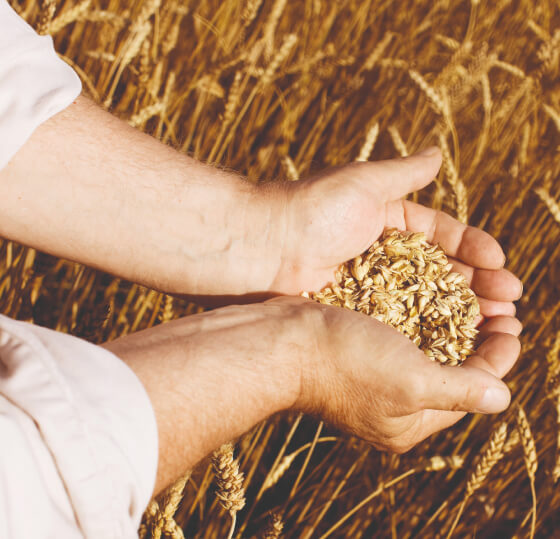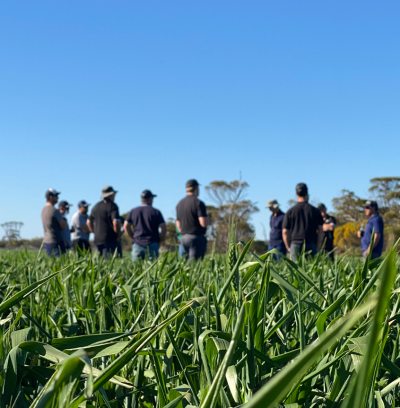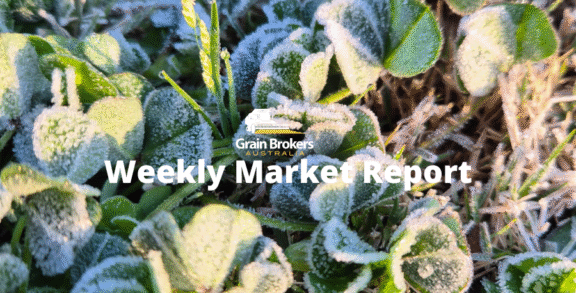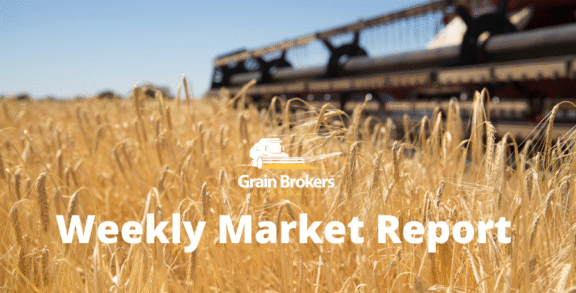
Among the many reports released by the United States Department of Agriculture last Friday was the national Winter Wheat and Canola Seedings update. This report tallies the state planting estimates from the autumn of 2024 and gives the market its first insight into potential US production from the winter crop that will be harvested in the spring and summer of 2025.
The estimates in this annual report are based primarily on mail, internet, and phone surveys conducted in the first two weeks of December last year. The December Agricultural Survey is a probability evaluation that includes a sample of approximately 73,300 farm operators randomly selected from a list of producers that ensures all farming operations in the country have a chance of being chosen.
The USDA pegged the total area planted to winter wheat at 13.82 million hectares, an increase of 2.3 per cent compared to 13.51Mha a year prior, and the second highest in the last 10 years behind the fall of 2022 when 14.85Mha were planted for harvest in 2023.
Looking at the class breakdown, the USDA called the hard red winter plantings 9.71 million hectares, up from 9.63Mha a year ago for 70.4 per cent of the total winter wheat area. The area planted to soft red winter varieties made up 18.9 per cent of the total at 2.61Mha, up from 2.45Mha in 2023, and the white winter crop covered just 1.47Mha or 10.7 per cent of the winter wheat program, marginally higher year-on-year.
Among the major producing states, the winter wheat area in Kansas is estimated to be 2.6 per cent lower at 2.99Mha; in Texas, it is expected to be 5.5 per cent higher at 2.35Mha; in Oklahoma, the survey said it was 2.3 per cent lower at 1.72Mha; farmers in Montana have increased plantings by 15.4 per cent to 0.91Mha; and the Colorado area was unchanged at 0.85Mha. Collectively, these five states account for almost two-thirds of the US winter wheat area, with Kansas the heaviest hitter at 21.7 per cent of the total.
Other changes of note among the states with a planted area of more than 0.2Mha were Kentucky, down 7.1 per cent; Michigan, up 37.5 per cent; Missouri, down 6 per cent; Nebraska, down 3 per cent; Ohio, up 26.9 per cent; Oregon, up 1.4 per cent; South Dakota down 8.1 per cent; and Washington up 2.8 per cent.
Of significant interest are the origins of the area expansion, which is largely outside of traditional winter wheat-producing states. Most of the decline came from Kansas and Oklahoma, which are big winter wheat states, but there were some significant area increases in less traditional winter wheat states in the Great Lakes region, the Southeast, and the West Coast.
Meanwhile, winter wheat condition ratings for Kansas declined significantly during December, despite an improvement to the dry conditions being experienced in parts of the state. As of January 5, the USDA rated 47 per cent of the Kansas winter wheat crop in good-to-excellent condition, down from 55 per cent in late November, but an improvement on the 43 per cent rating at the same time last year. The fair rated proportion was 37 per cent of the crop, and the poor to very poor rated districts made up 16 per cent of the planted area.
On the same date, the National Agricultural Statistics Service rated the state’s topsoil moisture reserves at 9 per cent very short, 27 per cent short, 60 per cent adequate, and only 4 per cent in surplus. Subsoil moisture supplies were judged as 12 per cent very short, 30 per cent short, 56 per cent adequate, and 2 per cent in surplus.
According to the latest US Drought Monitor report released on Thursday of last week, 24.6 per cent of Kansas was considered to be in moderate drought, down from 28.7 per cent a week earlier and 45.3 per cent at seeding time. Another 40.2 per cent of the state was reported as abnormally dry, up from 36.1 per cent a week earlier.
This season’s good to excellent wheat ratings also dropped throughout December in Nebraska (27 per cent), Oklahoma (45 per cent), and South Dakota (22 per cent) but improved in Montana (42 per cent) and Colorado (70 per cent). As of December 31, around 25 per cent of the national winter wheat area was experiencing some degree of drought, down from 27 per cent before Christmas and 32 per cent a year earlier.
According to the January 7 US Drought Monitor Report, 30 per cent of Oklahoma was in the abnormally dry to exceptional drought category, down 15 points from the previous year. Down in Texas, that number was 63.2 per cent of the state’s area, unchanged week-on-week, but up from 56.5 at the same time in 2024. The situation is far worse in South Dakota, where the entire state is drought declared, which will present significant challenges if significant precipitation doesn’t arrive ahead of the critical spring wheat planting window, which traditionally opens in late March.
Ratings declined in Illinois and Ohio as well, where soft red winter, used to make cookies and snack foods, is the main wheat crop. The USDA rated 69 per cent of the Illinois crop as good-to-excellent on January 5, down from 80 in November. In Ohio, the number was 57 per cent compared to 70 in November.
Despite the USDA report’s title, data on the canola area was relatively scant. According to last week’s report, the seeding estimate period has yet to commence in the three main producing states of North Dakota, Montana and Washington. The total area planted to canola in the autumn of 2023 was 1.11Mha, with North Dakota accounting for 77.8 per cent of the total, and a year earlier, the area was 0.95Mha, with the North Dakota share at 82.3 per cent.
Call your local Grain Brokers Australia representative on 1300 946 544 to discuss your grain marketing needs.





